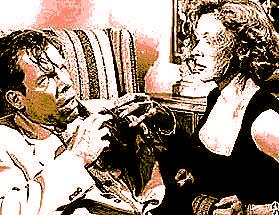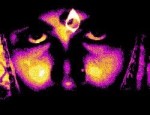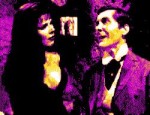Film Review

The film stars Glenn Ford and Gloria Graham, whom Fritz Lang would cast as the leads in his subsequent film, Human Desire (1954), an American remake of Jean Renoir's 1938 film, La Bête humaine. Jocelyn Brando, the actress who plays Bannion's ill-fated wife, was none other than the older sister of the iconic actor Marlon Brando.
The Big Heat is one of the first examples of a sub-genre of noir thriller in which the main protagonist is driven to step outside the law to enact his own notion of justice. There is an unsavoury moral equivalence of gangsters and cops - both have snouts in the same filthy trough - which the solitary trenchcoat-wearing hero attempts to break away from in order to avenge crimes that would otherwise go unpunished. This is quite a break with the film noir heroes of the previous decade who, by and large, tended to operate within the confines of the law. Another twist is that the role of the femme fatale is reversed - here she becomes the unintended victim of the hero's actions, rather than an instrument of his downfall.
Whilst it is less stylised than the great noir films of the 1940s, The Big Heat is undisputedly one of the best examples of classic American film noir. What is particularly memorable about the film is its intense visceral impact - a dark streak of pessimism and cruelty which borders on sadism. The scene where Bannion's wife is murdered is shocking because of its unexpected suddenness (the actual killing, like most of the violence in the film, happens out of camera shot). Likewise, Debby Marsh's facial disfigurement hits the spectator with the malicious brutality of a baseball bat. It may sting and surprise, but none of this violence is gratuitous. It is there to create a realistic impression of the lawless world in which Bannion finds himself as he carries on his one-man crusade against corruption. In this respect, it is much more successful than later films, in which extreme violence is shown far more explicitly.
© James Travers 2008
The above content is owned by frenchfilms.org and must not be copied.
Film Synopsis
Investigating the apparent suicide of a fellow officer, detective Dave Bannion soon discovers he is about to lift the lid on something that reeks of vice and corruption. The dead man's mistress Lucy Chapman is brutally murdered immediately after giving Bannion information that contradicts the evidence of his wife. Realising that gangster boss Mike Lagana is implicated, Bannion confronts him with a threat to bring him to justice. A short while later, Bannion's wife is killed by a car bomb that was intended for the troublesome cop. With nothing to lose, Bannion hands in his police badge and goes on the offensive. It's time to bring the curtain down on Lagana's seedy little empire...© James Travers
The above content is owned by frenchfilms.org and must not be copied.
Similar Films
Here are some other films you may enjoy watching:- Quicksand (1950)
- Maigret tend un piège (1958)
- L'Insoumis (1964)
- The Upturned Glass (1947)
- The Maltese Falcon (1941)
Other related links:
Film Credits
- Director: Fritz Lang
- Script: William P. McGivern, Sydney Boehm
- Cinematographer: Charles Lang
- Music: Henry Vars
- Cast: Glenn Ford (Det. Sgt. Dave Bannion), Gloria Grahame (Debby Marsh), Jocelyn Brando (Katie Bannion), Alexander Scourby (Mike Lagana), Lee Marvin (Vince Stone), Jeanette Nolan (Bertha Duncan), Peter Whitney (Tierney), Willis Bouchey (Lt. Ted Wilks), Robert Burton (Det. Gus Burke), Adam Williams (Larry Gordon), Howard Wendell (Police Commissioner Higgins), Chris Alcaide (George Rose), Michael Granger (Hugo (police clerk)), Dorothy Green (Lucy Chapman), Carolyn Jones (Doris), Ric Roman (Baldy), Dan Seymour (Mr. Atkins), Edith Evanson (Selma Parker), Phil Arnold (Retreat Waiter), Linda Bennett (Joyce Bannion)
- Country: USA
- Language: English
- Support: Black and White
- Runtime: 89 min
The best of Indian cinema

The best of British film comedies

The very best American film comedies
